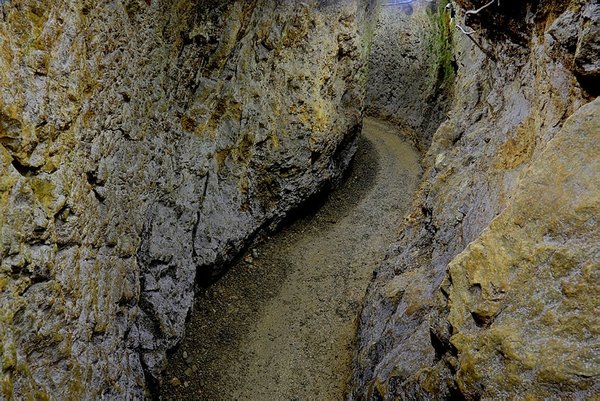
Underground city in Turkey draws 15,500 tourists in 2018
Aydıntepe underground city in Turkey's Bayburt province, which was coincidentally discovered during a construction excavation, attracted nearly 16,000 tourists in 2018, a local official said.
- Türkiye
- Anadolu Agency
- Published Date: 04:10 | 01 February 2019
- Modified Date: 04:11 | 01 February 2019
A 3,000-year-old underground city in northeastern Turkey was visited by 15,500 tourists in 2018, said an official on Friday.
Aydıntepe underground city -- bearing the name of the district it is located -- in Bayburt province stands out as an important historical site in the district.
The ancient city -- which was coincidentally discovered during a construction excavation in 1988 -- is located 2-2,5 meters (6.5-8.2 feet) under the surface and consists of galleries, rooms and larger areas connected to these rooms which were carved into the bedrock without any building materials.

The rooms, measuring two meters by one meter (6.5 feet in length, 3.2 feet in width) open onto larger galleries, which in turn open onto halls running in both directions.
There are conic-shaped holes that are thought to be used for observation or air circulation in the ceilings of the over one kilometer (over 0.62 miles) long galleries.
The city under the houses, shops, and streets of Aydıntepe district center fascinates the visitors with its thousands-of-years mystery.
"How the bedrock was carved to form that work of art, how this structure is made with human labor astonish people today," Mustafa Akın, Aydıntepe district governor, told Anadolu Agency.
Akın invited all citizens to visit the subterranean city to witness its beauty.
He added that the discovered area was only the tip of the iceberg.
"Detailed research is ongoing for this. There are rumors that the Aydıntepe underground city spans to the Bayburt Castle from here."
The underground city is located some 25 km (15 miles) northwest of Bayburt.
Akın said the provincial directorate of Culture and Tourism carries out research to find out how long it spans.
He said the current discovered route would be covered in 15 minutes, and added: "Inside is shorter than a human height, and sometimes you need to bend your head.
"The 800-meter (2.624 feet) area that is open now is located under the district center. This is the area we discovered coincidentally during a construction excavation."
He said the rest of the place needed to be searched via georadar systems.
Akın emphasized that there was no problem with the durability of the subterranean city as it was carved by hand, but some measures were needed to protect it.
"Now, a protection plan is being prepared," he said, adding that the routes covering the underground city on the earth were going to be reconstructed after the approval of Erzurum Regional Council for Cultural Heritage Preservation.
The wall figures and tombs found inside the city are believed to date back to the late Roman and early Byzantine period.

